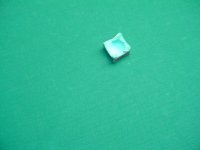SUPERSTAR said:I never had a preference of which chalk to use, and was always using whatever the pool room had.
Most of the rooms that i know use MASTER, which i never ever had a problem with until about 4-5 years ago.
Whatever they did to it completely changed the way it played.
ESPECIALLY that MASTER that had the FLAG printed on the side.
THOSE pieces were total junk IMO.
Some batches were just to soft and large grained. Kind of like Sand, and it wouldn't be uncommon for us to get a new piece at the beggining of say a 4 hour session, and have this HUGE hole whiddled into it by the end. A hole that you might think took maybe a week or so of constant play to achieve. Chalk would be all over your hands, and all over the table.
Some of those batches were the complete opposite, and were so hard, it was like trying to chalk your tip with a piece of granite!
I think that once the MASTER with the FLAG left the scene, that particular chalk has never been the same, for the same reasons. Too hard, or too soft.
The other thing that drives me crazy, is the fact that the MASTER that i use today, sucks up moisture like a sponge, and when i go to chalk, and it is humid out, it's not CHALKING the tip. It is for all intensive purposes, CLAYING the tip. Very wet, and streaky, and one swipe puts some on, and the very next swipe puts a new steak on and takes some of the old one off.
I end up either having to go ask the houseman to go toss the piece in the microwave for a minute (when i am gambling) as this heats it up, and stops the whole wetness thing from happening for maybe 10 minutes, or i end up having this wad of paper towels, in which i swipe the chalk with the towel, removing the wet clay surface stuff, until i get lower, and it starts to behave like chalk, and FLAKE/grain off, instead of streaking/claying off.
This might last about 4 or 5 shots in humid conditions before i have to do it again.
SILVER CUP on the other hand, is a chalk that i have NEVER had a problem with. It's never been too hard, or to soft, and has NEVER started to "CLAY UP" when the weather conditions got humid.
Personally, i feel that it is a much better, more consistent chalk then MASTER, and that the only reason MASTER is more popular, is cause it is one of the industry standards.
MASTER is the ONLY chalk that i have ever played with that i have miscued in the MIDDLE of the tip, and not on the edges. (usually when it is "claying") Which at the times it happens, completely baffles me, and leaves me with a big question mark over my head, wondering how on earth that is possible.
I have NEVER had that problem or any for that matter with SILVER CUP. It has never cost me any money, where MASTER i feel has cost me some $$$$ over the years.
I would have to concur with your conclusions about Silver cup. I too have noticed a that masters can sometimes end up looking like toothpaste on the end of your cue. Silver cup is always consistant in it's texture and application. I also like it because it makes less of a mess on my ferral.
I use the Green Silver Cup most often, although I do still use masters as well. As for the mess it leaves on the table..... Shrugs, I guess that's my way of making sure the room owner does his regular cleaning on the tables. I don't think clean tables are too much to ask for. I hate coming home from a place with the heel of my hand discolored from dirty tables.
